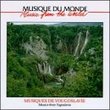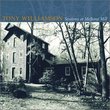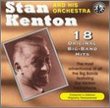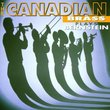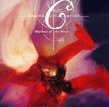| All Artists: Aram Khachaturian, Andrey Anikhanov, André Anichanov, St. Petersburg State Symphony Orchestra Title: Khachaturian: Gayanne Suites Nos. 1-3 Members Wishing: 0 Total Copies: 0 Label: Naxos Release Date: 10/4/1994 Genre: Classical Style: Number of Discs: 1 SwapaCD Credits: 1 UPC: 730099580021 |
Search - Aram Khachaturian, Andrey Anikhanov, André Anichanov :: Khachaturian: Gayanne Suites Nos. 1-3
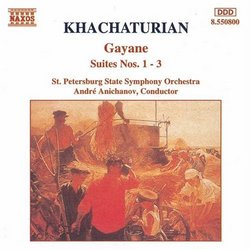 | Aram Khachaturian, Andrey Anikhanov, André Anichanov Khachaturian: Gayanne Suites Nos. 1-3 Genre: Classical
|
Larger Image |
CD DetailsSimilar CDs
Similarly Requested CDs
|
CD ReviewsLots of Gayaneh, why not record the whole ballet? Cory | Virginia | 06/30/2000 (4 out of 5 stars) "You'd think if anyone was going to bother recording three separate suites from a ballet, they'd go ahead and record the whole ballet. Unfortunately not. But to Naxos' credit, this particular recording is fairly comprehensive, touching on most of Khachturian's ideas and thematic material. After a long search, I finally located a full 2-CD recording of the ballet with the USSR Radio and Television Large Symphony Orchestra under Djansug Kakhidze on the Russian Disc label. The ballet in its full context is beautiful, whereas the suites turn the pieces into small, individual concert pieces (Sabre dance is the epitome of this). Does the ballet really need to be cut into large suites in order to salvage the music, or will the recording industry one day realize the demand there is for a full, attainable Gayaneh recording? While the suites are nice, hearing the ballet in its context and entirity is essential to the Khachaturian lover." Superb music Sergio Beck | Sao Paulo - SP Brazil | 11/07/1999 (4 out of 5 stars) "Khachaturian wrote beautiful music and Gayane is probably hisbest. And though inexpensive, this recording is not bad at all. A pityit's only 56 minutes playing time. It's also the only Gayane Ballet Suite CD available at amazon.com - a shame! I wished there was a complete suite available - hours of beautiful music! But I guess we should feel lucky there's at least this one. I keep listening to it again and again..." Is there any hope for the complete ballet? Eric S. Kim | Southern California | 11/14/2006 (5 out of 5 stars) "While I do adore the 3-suite version on this Naxos CD, I'm still waiting for the complete version of Khachaturian's Gayane ballet music. Since all the other complete Gayane CD's are out of stock, I have to rely on this Naxos CD and the 1942 complete original version on RCA (with Tjeknavorian as conductor) and that one has preposterous sound quality. I'll be waiting years on for any studio (whether it be Deutsche Grammophon or Decca or Chandos or so forth) to sell the complete version (any version) on disc."
|

 Track Listings (17) - Disc #1
Track Listings (17) - Disc #1
